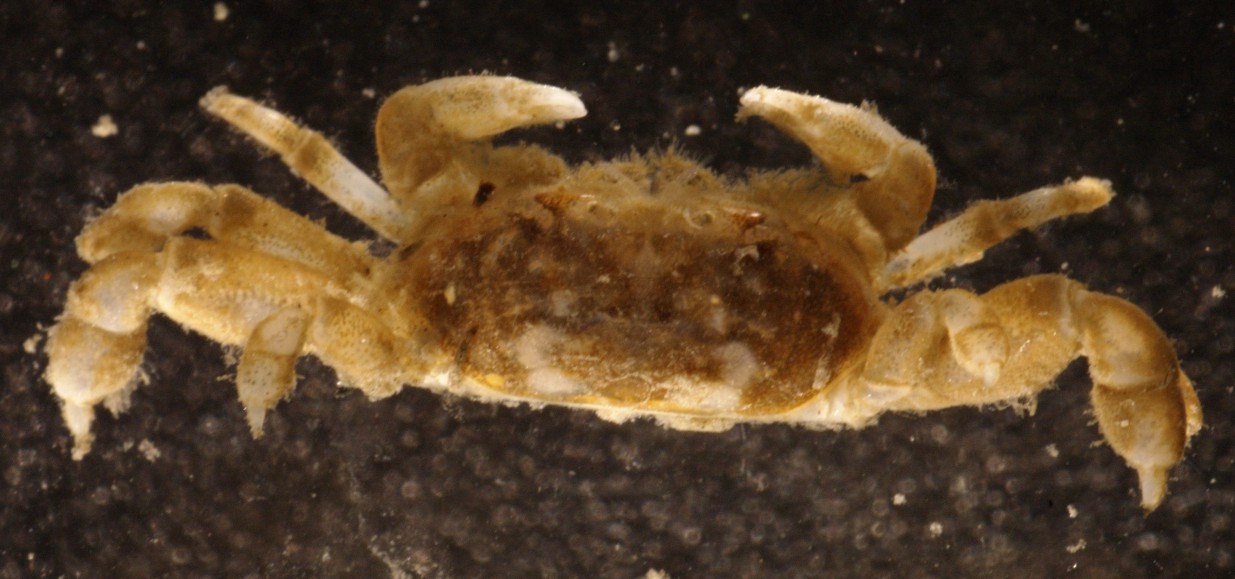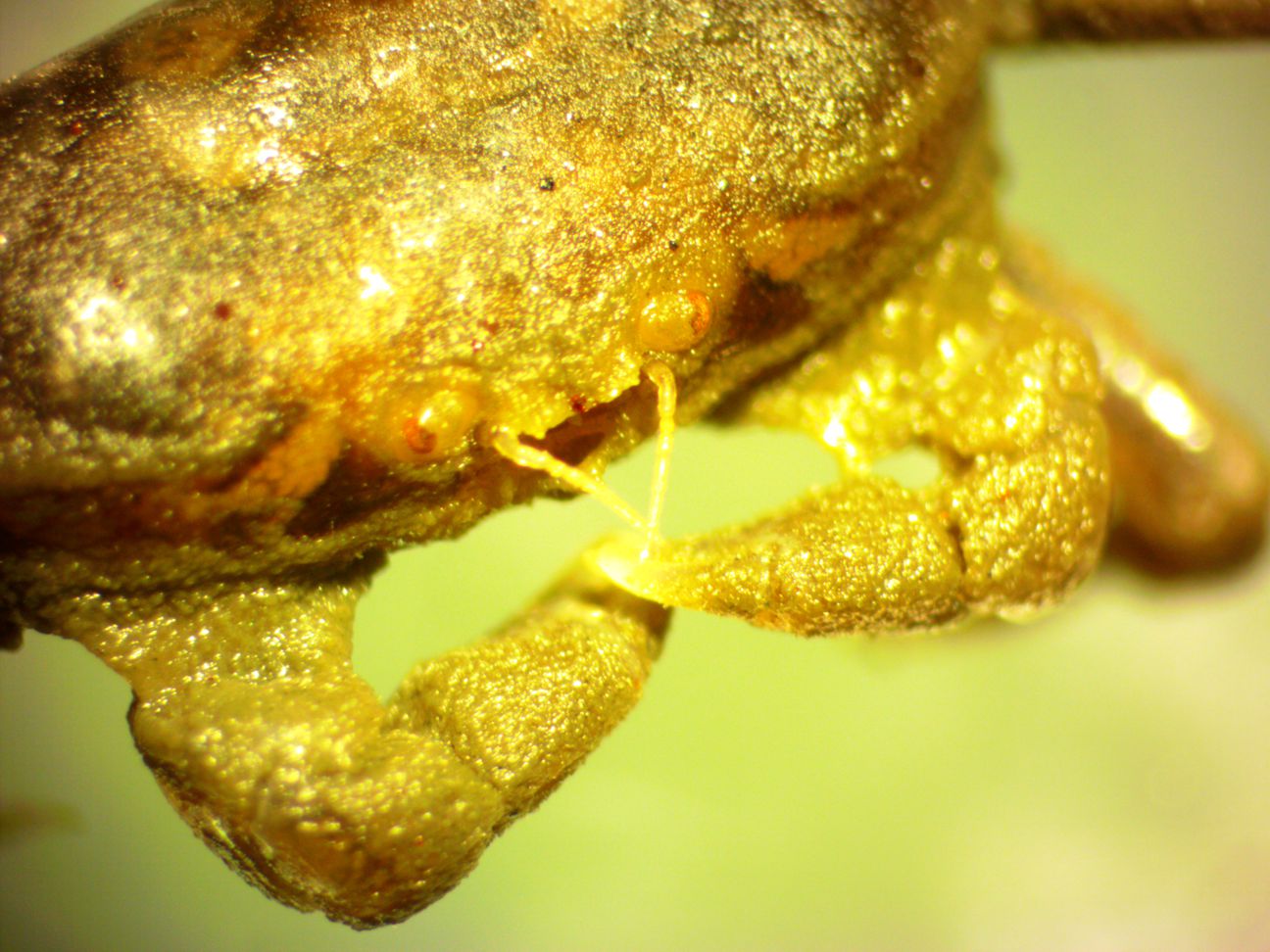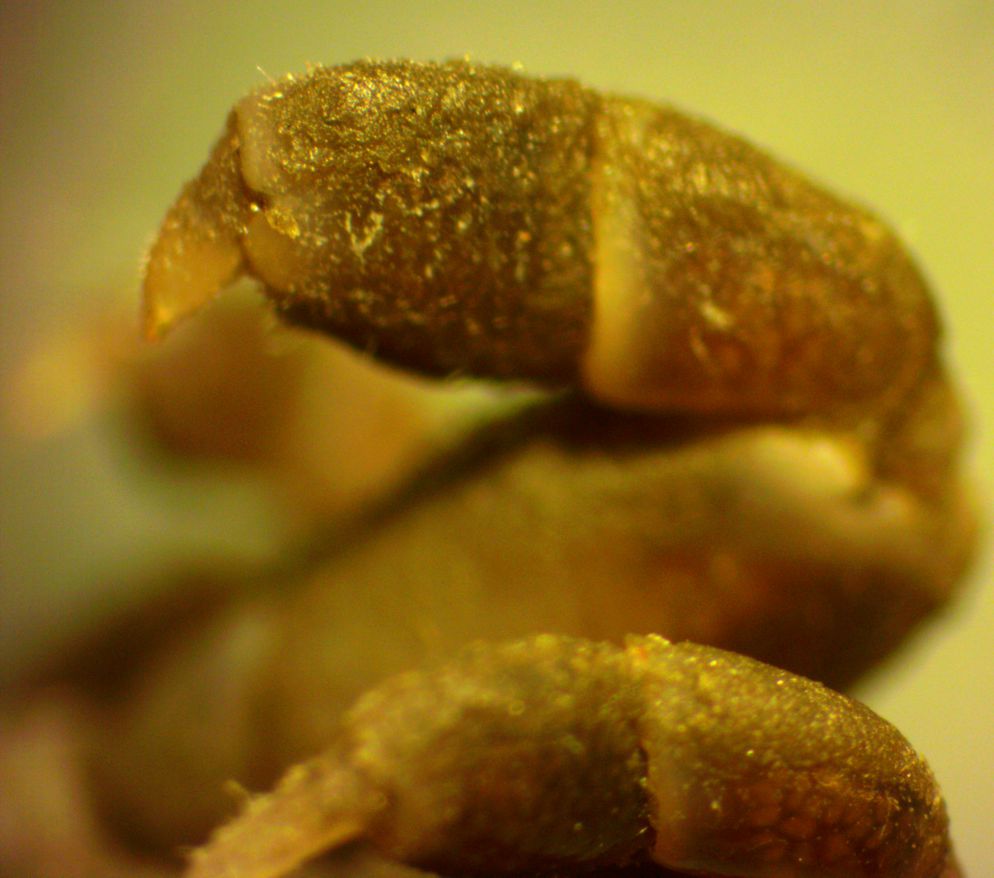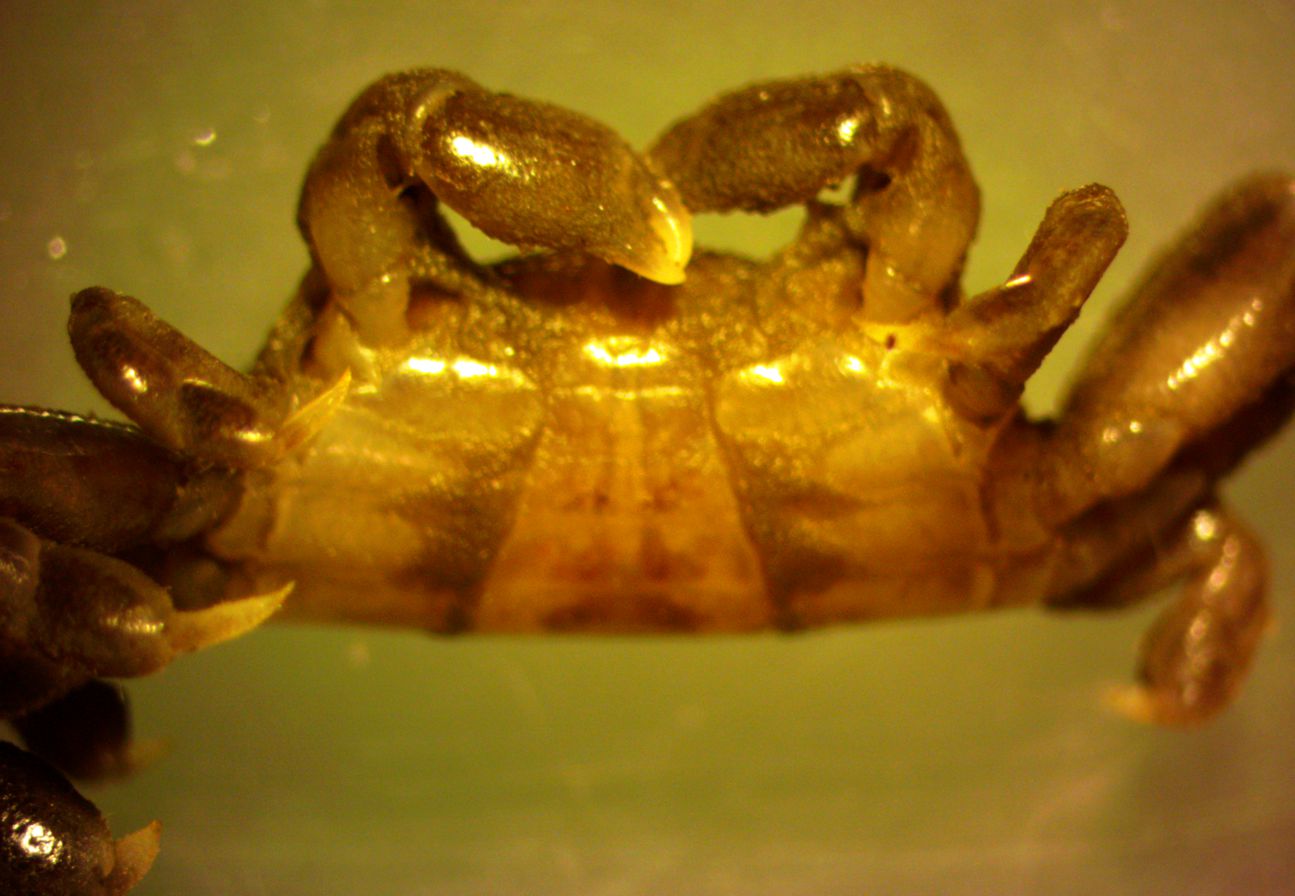Pinnixa tubicola Holmes, 1894Common name(s): Tube-dwelling pea crab, polychaete worm pea crab, burrow crab |
|
| Synonyms: |  |
|
Phylum Arthropoda
Subphylum Crustacea
Class Malacostraca
Subclass
Eumalacostraca
Superorder Eucarida
Order Decapoda
Suborder Pleocyemata
|
|
| Female Pinnixa tubicola, found intertidally at March Point, Padilla Bay, by Sarah Bewley and Melissa Moxey along with terebellid tubeworms. Carapace width 7 mm. | |
| (Photo by: Dave Cowles, June 2012) | |
Description: As with all members of Family Pinnotheridae, this crab is small, has no rostrum, and has an oval, circular, or sqared-off carapace which has no teeth either between the eyes or along the anterolateral margin plus lives symbiotically. This species has a very wide carapace, 2x (males, 10 mm max width) up to 2.5x as wide as long (females, 18 mm max width). The third pair of walking legs is longest. The propodus of legs 3-5, especially of leg 3, are longer and much wider than the dactyl (photo). Walking leg 4 has no long setal fringe and the posteroventral margin of the ischium of walking leg 4 has no tubercles. The telson is wider than long and distally curved. Color a pattern of light and dark brown, gray, and some white. Chelipeds are white with patches of brown, red, or orange with white tips. Walking legs are white with dark brown streaks and blotches. Cornea red with gold flecks (photo).
How to Distinguish from Similar Species: Of pinnotherid species with carapaces more than 1.5x as wide as long, this species differs from P. faba and P. littoralis because those species have curved dactyls. It differs from P. eburna, P. occidentalis, and P. schmitti because those species do not have a propodus of legs 3-5 clearly longer (and wider) than their dactyl. It differs from P. longipes (which occurs in California) because P. longipes has a long setal fringe on walking leg 4 and tubercles on the posteroventral margin of the ischium of walking leg 4.
Geographical Range: Prince Rupert, BC (or southern Alaska) to Mexico
Depth Range: Intertidal to 57 m
Habitat: Tubes of tubeworms such as Chaetopteris and Terebellids; tubes of Neotrypaea californiensis.
Biology/Natural
History:
Lives
in polychaete worm tubes such as Chaetopterus
and Terebellids.
Several other very similar pea crab species do as well, such as
juveniles
of P.
franciscana.
Frequently in pairs in the worm tube. Ricketts
et al. (1985) state that only males of this species have been
found
ranging outside of the tubeworm burrow, and that rarely. This
species
is widespread but is often overlooked.
| Return to: | |||
| Main Page | Alphabetic Index | Systematic Index | Glossary |
References:
Dichotomous Keys:Carlton, 2007
Flora and Fairbanks, 1966
Kozloff, 1987, 1996
General
References:
Hart,
1982
Jensen,
1995
Lamb
and Hanby, 2005
O'Clair
and O'Clair, 1998
Ricketts
et al., 1985
Scientific Articles:
Zmarzly, 1992. Journal of Crustacean Biiology 12:
pp 677-713
Web sites:
General Notes and Observations: Locations, abundances, unusual behaviors:

Front view of Pinnixa tubicola, found in 2018. Note red/gold eyes. Photo by Dave Cowles, August 2018

On several of the legs, the dactyl (end segment, to the left here) is shorter and narrower than the propodus (the next-to-the-end segment). Photo by Dave Cowles, August 2018

This
view of the underside of the same individual as above shows by the
broad, rounded abdomen that it is a female. Photo by Dave Cowles,
August 2018.
Authors and Editors of Page:
Dave Cowles (2012): Created original page
CSS coding for page developed by Jonathan Cowles (2007)
Salish Sea Invertebrates web site provided courtesy of Walla Walla University